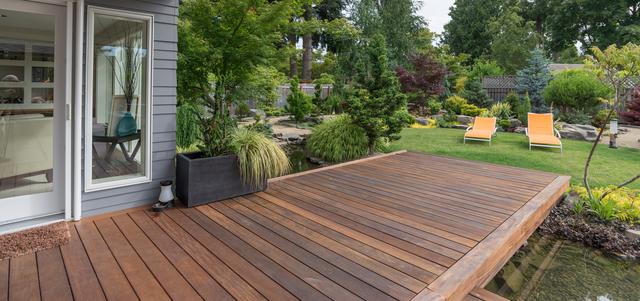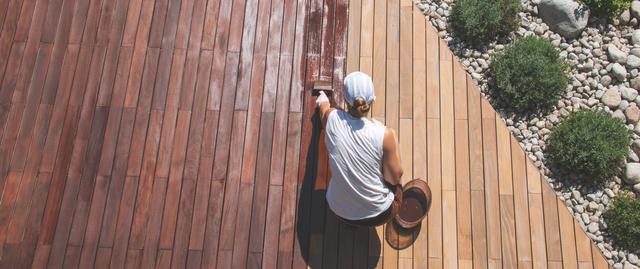As a homeowner, one of the most significant home improvement projects you can undertake is painting or staining your deck. A beautifully painted or stained deck can enhance your home's curb appeal and make it an inviting outdoor space to entertain guests or relax with your family. However, before embarking on this project, there are several factors to consider to ensure a successful outcome. In this article, we'll discuss the top three things homeowners should consider when painting or staining their deck.
Material of the Deck
The material of your deck will have a significant impact on the type of paint or stain you can use. Most decks are either made of wood or composite materials, and each has its unique characteristics that will affect the painting or staining process.
Wooden decks are the most common type, and they require more maintenance and upkeep than composite decks. If you have a wooden deck, you can choose between oil-based or water-based stains or paints. Oil-based stains penetrate deeper into the wood and last longer than water-based stains. However, oil-based stains can be harder to apply and take longer to dry. On the other hand, water-based stains dry quickly and are easy to apply, but they don't last as long.
Composite decks are made of a combination of wood fibers and plastic, making them more durable and low maintenance than wooden decks. However, not all paint or stain products are suitable for composite decks. You'll need to choose a product that's specifically designed for composite decks and follow the manufacturer's instructions carefully.
Average cost: The cost of staining or painting a deck will vary depending on the size of the deck and the materials used. On average, homeowners can expect to pay between $1.50 and $5.50 per square foot for deck staining or painting.
Weather Conditions
Weather conditions can significantly impact the success of your deck painting or staining project. Ideally, you should choose a day when the temperature is between 50 and 90 degrees Fahrenheit and the humidity is low. High humidity can cause the paint or stain to dry slowly, resulting in a patchy finish. Also, avoid painting or staining your deck on windy or rainy days.
Before starting your project, make sure the deck is completely dry. If it rained or the deck is damp, wait at least 24 hours before painting or staining. Moisture can prevent the paint or stain from adhering to the wood, resulting in a peeling or flaking finish.
Average cost: The cost of weatherproofing materials like sealers, stains, and paints will vary depending on the brand and quality. On average, homeowners can expect to pay between $25 and $45 per gallon of sealant or stain.
Preparation
Preparation is crucial to achieving a professional-looking finish on your deck. Start by cleaning the deck thoroughly to remove dirt, debris, and mildew. You can use a pressure washer or a scrub brush and a mild detergent to clean the deck. Allow the deck to dry completely before moving on to the next step.
Next, inspect the deck for any signs of damage or rot. Replace any damaged boards and sand the deck to remove any splinters or rough spots. If you're painting your deck, you'll need to prime it first to ensure the paint adheres properly. Once the primer is dry, you can start painting or staining your deck.
Average cost: The cost of deck cleaning supplies, sandpaper, and primer will vary depending on the size of the deck and the brand and quality of the products. On average, homeowners can expect to pay between $50 and $150 for cleaning supplies and primer.






comments